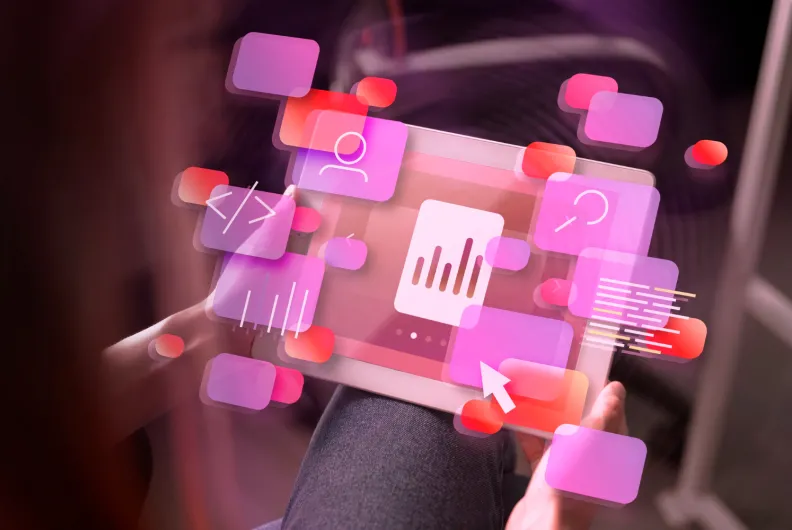3 UX/UI Design Trends to Infuse Into Your Web Strategy in 2025
Chasing faddish design trends in web development is risky. What’s “in” one day can easily be “out” the next. And that means if you focus on trends too much, your website could end up looking disjointed, outdated, and off-brand.
But that’s not to say you shouldn’t care about design trends at all. Trends often signal a shift in consumer behavior or are reflective of the larger culture in which you operate. As your users’ preferences and expectations evolve, innovating along with them is a key part of staying competitive and relevant.
So, how do you strike the right balance? It comes down to this: Keep your users firmly at the forefront of every design decision.
Your goal should always be to create beautiful, positive, and memorable digital experiences that compel your users toward meaningful action. To that end, here are three design trends you can’t afford to ignore in 2024 (and beyond).
1. Ethical Design
One pitfall of blindly following design trends is that some of the more popular trends are ultimately not good for the user. Consider dark patterns as an example. Some might tout dark UX as a tool to get your user to take the actions you need them to take. But in reality, this design technique is deceitful and unethical.
Yes, differentiating your organization from your competitors will require you to get creative about how you grab your audience’s attention. But ultimately, attention is fleeting. So to earn and keep your audience’s trust — the kind that inspires them to buy what you’re offering — it’s essential to make ethical design choices.
The future of web strategy is highly personalized and authentically human-centered. As such, ethical design is all about providing experiences that prioritize transparency, inclusivity, and user empowerment. Ethical design choices include things like:
- Making privacy controls and data usage clear
- Allowing users to customize their experience (e.g., opting for dark versus light mode)
- Eliminating manipulative calls-to-action and pop-ups
- Ensuring images and videos are diverse and inclusive
- Labeling links and user pathways clearly and honestly
- Offering meaningful micro-interactions
Since your ultimate goal is to use ethical design to improve every user’s experience, don’t be shy about asking for feedback. Inviting your audience to weigh in on what they like about your site and what they’d like to see improve is another way to underscore your commitment to operating ethically and authentically.

2. Added Layers of Accessibility
Closely related to ethical design is the growing prioritization of accessibility in UX and UI. True, website accessibility is nothing new. It’s always been important to design accessible and inclusive experiences that take the full range of your audience’s needs into account.
But as organizations become more and more aware of the varied needs of their audiences, the emphasis on accessibility will only increase.
The best way to ensure your website is as accessible as possible is to consider your audience’s needs in conjunction with the design process rather than as an afterthought.
Whether you’re designing an entirely new site, building a campaign-specific landing page, or generating content for an existing area within your organization, consider how to incorporate:
- Flexible, responsive design elements that adapt to the ever-evolving assistive technologies and devices users rely on
- Alternative content for those with learning disorders or impaired vision/hearing
- Subtitles, transcripts, and readable fonts
- Microcopy and useful snippets of text to make content readable, scannable, and easily comprehensible
- AI-powered assists to improve site navigation and comprehension
Layering in these features is a tangible way to convey your organization’s commitment to serving your entire audience. And since enjoyable, empowering experiences draw your users in and keep them coming back for more, focusing on accessibility is a smart business strategy, too.
3. The Rise of AI-Powered Design Tools
In 2023, AI became a ubiquitous part of our collective lexicon. But though the hype surrounding AI reached a fever pitch in 2023, its potential is still largely untapped. So, what if you haven’t started using AI yet? Or haven’t gotten as far as you intended? No worries. There’s still plenty of opportunity for you to leverage its power and maximize its impact in 2024 and beyond.
New AI tools enter the market every day. Among other things, they leverage machine learning and neural networks to enhance user research, prototype testing, graphical design, and more. As a marketing leader, you can expand your team’s capabilities by using AI tools to:
- Analyze user feedback to identify pain points
- Automate parts of tree/card sorting to test your information architecture
- Generate eye-catching visuals including interface mockups
- Suggest intuitive menus and navigation structures
- Automate data analysis and identify key patterns and findings
- Check designs against best practices and brand guidelines
And tying in with our points about accessibility above, you can also use AI to review websites for compliance issues, generate alt text, predict negative user reactions, and more.
Of course, artificial intelligence still requires — and will hopefully always require — human insight and oversight. AI makes mistakes and can even unknowingly perpetuate biases and prejudices. Its information is only as good as the data it finds when it crawls the web, which means sometimes the results it generates can be problematic.
This takes us back to the importance of ethical design. As you begin utilizing the numerous AI tools available to you, do so with your organization’s mission and values firmly in mind.
Keep Users at the Center of Your UX/UI Design Decisions
Keeping your finger on the pulse of an ever-changing market is a key part of positioning your organization for success. But when it comes to embracing emerging design trends, there’s no reason to make design changes simply for change’s sake.
Rather, consider each trend through the lens of the user experience. Ensure your approach is human-centered, accessible, and — above all else — ethical. Ask your users for feedback regularly, and let their insights guide your long-term web strategy.
There’s no need to be afraid to try new things, especially if each experiment you embark on is firmly rooted in a desire to serve your users better.
Ready to partner with a web design agency? Reach out today!
Contributors










